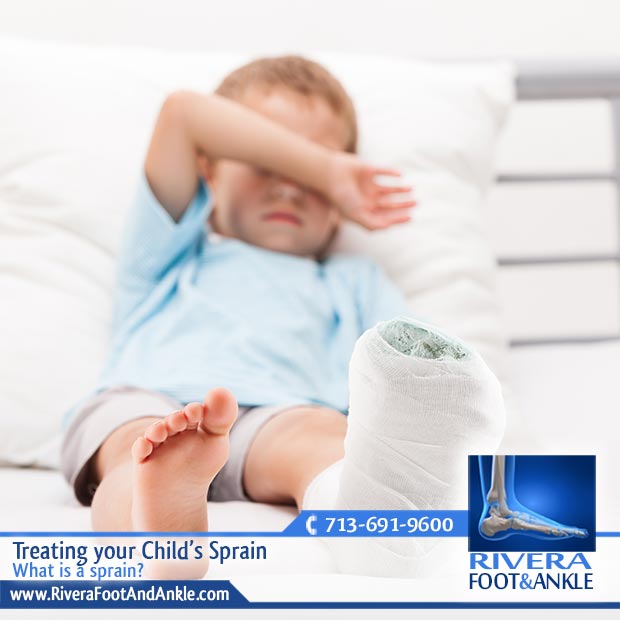
Treating your Child’s Sprain
A sprain results when a ligament on one side of the bone is stretched.
Are there different grades of sprains?
Yes. There are three grades of sprains, each one varying in the level of pain.
Grade 1 sprains occur when the ligament is stretched, however it is not torn. Grade 2 occurs when the ligament is partially torn, whilst grade 3 is the complete tear of a ligament. Possible sprain symptoms include sharp pain, bruising, swelling and a loss of joint movement.
Treatment
Try to keep your child calm and comfortable if they are stressed, uncomfortable or in pain.
Note that mild sprains can be treated at home. Medications to help relieve pain and inflammation can be purchased over-the-counter.
Apply the ‘RICE” method in treating sprains. This involves:
- Rest – The injured area should be rested for a minimum of 24 hours.
- Ice – Ice helps to reduce swelling so apply an ice pack for approximately 10-15 minutes at a time. This should be done every few hours for the first day or two.
- Compression – ‘A compression bandage is advised for the first two days too, as it will help to reduce swelling and support the weakened joint in its recovery.’
- Elevation – Elevate the injured joint above heart level. This will assist in helping to minimise unnecessary swelling as well as discomfort.
Avoid the application of heat
You should avoid applying any form of heat to your child’s sprain (for at least the first 24 hours), as this may cause pain and swelling to occur.
Seek medical attention
Seek medical attention immediately if your child has an injury to his neck or back or experiences extreme pain. Do not attempt to move them wait for medical help to arrive.
The doctor may perform an X-ray to ascertain if any bones are broken. The joint may need to be splinted or immobilised to encourage healing if it is a bad sprain only a medical professional should do this.
Preventing further sprains
To help prevent sprains from occurring again, encourage your child to perform warm-up exercises before engaging in sport or an exercise routine. In addition, they should also wear the correct shoes for the sport that they are engaging in, consume a healthy diet and maintain a healthy body weight.
Source: all4women
RIVERA FOOT & ANKLE: At Orlando H.Rivera DPM, our priority is to deliver quality care to informed patients in a comfortable and convenient setting. When you have problems with your feet, you need to turn to a podiatrist who listens and responds… an experienced doctor who knows the field and can effectively diagnose and treat your needs… a friendly physician who counsels you on the best ways to maintain and improve your health. Our physician(s) meet all these criteria. Plus, you benefit from a dedicated team of trained professionals who give you the individualized attention you deserve.

Ankle and Foot Specialist Houston.
Foot and Ankle, Dr. Orlando Rivera, Advanced Foot & Ankle Specialist, Foot and Ankle Podiatry, Houston Foot & Ankle Surgical, Treatment of Foot and Ankle, Foot & ankle specialists, Podiatrist in houston, podiatrist in houston, Orlando H.Rivera DPM, Houston Foot Doctor, Foot and Ankle Surgeon Houston, Ankle and Foot Specialist Houston, Podiatrist Houston, Foot Pain Houston.



